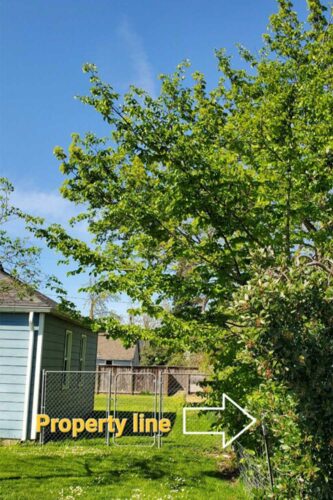
By Kim Kelly and the Garden Palette
Greetings, fellow gardeners. It’s officially Band Aid and Bactine season for all of us and the end of manicure season because, if you are out there gardening, manicures won’t make it through the day.
I’ve asked Alby Thoumsin, certified arborist with the PNW International Society of Arboriculture and Sperry Tree Care, to weigh in on the best time to prune a tree.
His answer is: Start with the ultimate goal in mind.
Alby says, “Most people assume pruning should take place in winter, but that is not necessarily true. Winter pruning is good for pruning conifers so their sap doesn’t drip nearly as much and the wound has time to dry before spring comes, but it is also a good time for rejuvenation pruning, especially on fruit trees, when old and barely productive branches need to be shortened or removed for the benefit of new branches.”
He says, “Winter pruning triggers new growth in spring because the area near the pruning cut has adventitious buds ready to wake up when the mature branch close to them is removed. Suddenly, the water and nutrients that are not going to the removed branch goes to the buds and they emerge naturally.”
“Summer pruning is the opposite,” Alby tells us. “By mid-June, the initial flush of growth has passed and the tree switches from sprint mode to cruise control until about mid-August. Any pruning made in summer will more likely have an effect of slowing down the tree’s response. It will focus more on closing the wound than replacing the branch, so any thinning for aesthetics, as an example, will last longer than if the same pruning is done in winter.”
“If a large branch has to be removed,” he says, “the best time is early spring because it reduces the time the wound is exposed to the elements, callus starts to grow around the wound and some small branches might emerge that can be used to shade the wound in summer.”
A sometimes contentious topic is the very reason we love the PNW: trees. So what if you have a tree overhanging the property line as shown in the photo? Alby recommends that neighbors talk to each other and resolve the issue amicably, but that is unfortunately not always the case.
He says, “The common law allows one to prune parts of the tree back to the property line so long as the pruning doesn’t jeopardize the life of the tree or creates a hazard. In other words, and to use an example based on my experience, a Douglas-fir that has 90 percent of its branches over someone’s property (because the tree is at the edge of a woodsy lot with trees that competed for light with the fir) could be killed if the owner of the property decides to remove all the branches hanging over their side since Douglas-fir are not usually able to grow branches back from the trunk like an oak or ash would do.”
Legally, he says, “permission is not needed, but it’s always much better to have that conversation/permission with the owner of the tree. They are not responsible to prune the tree, but occasionally a very good tree owner will take care of the entire tree to maintain good relations with his or her neighbor.”
Alby strongly recommends making this clear to whoever is hired to do the job because arboriculture is not a protected profession, and anyone with a CCB (Construction Contractors Board) license and a chainsaw can call him or herself a professional arborist and might not be aware of the common law and/or making very bad pruning cuts past the property line. If the permission was not granted, it’s considered trespassing.”
And we don’t want to be trespassing!
Next month, Master Gardener John Fischer is ready to advise about watering. And although we might think water isn’t important until it stops raining, John has other thoughts about the topic. Until then, consider beginning your watering schedule now.
Happy planting!
The Garden Palette is Kim Kelly, Cynthia Doak, John Fischer, Rachel Foster and Alby Thoumsin. Have a question for the writers? Gardening@EugeneWeekly.com.